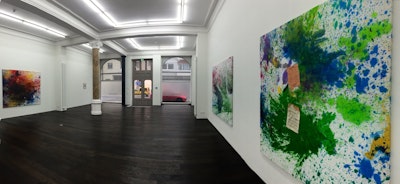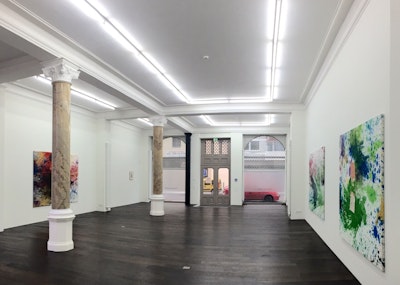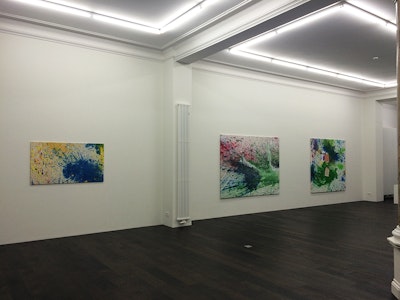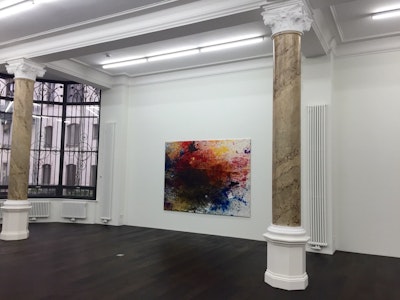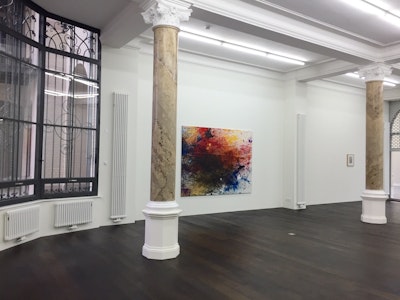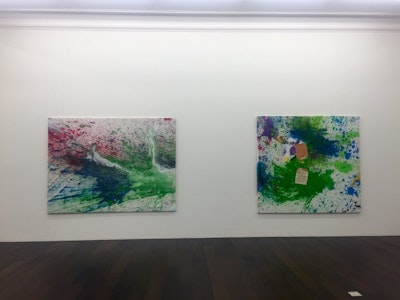Scream of Matter
a cura di / curated by Davide Di Maggio and Jagoda Lagiewska
GUTAI - Scream of Matter
29 November 2014 - 28 January 2015
We are pleased to announce opening of the Gallery with the explosion of paint, spontaneity of action, pure experience of art.
Beginning 29 November 2014, WeGallery for its first gallery exhibition opening in Berlin is pleased to present, GUTAI - Scream of Matter, a landmark historical exhibition, curated by Jagoda Lagiewska and Davide Di Maggio, that explores this legacy through masterworks by eight Gutai members: Shozo Shimamoto, Kazuo Shiraga, Sadamasa Motonaga, Yasuo Sumi, Atsuko Tanaka, Tsuruko Yamazaki, Jiro Joshihara, Chiyu Uemae.
A visual essay on Gutai traces efforts by these
artists to resolve the inherent contradictions
between traditions of painting, and the core
tenets of a movement that called for experimentation, individuality, unexpected
materials, and, perhaps above all, physical action and freedom.
First artists which WeGallery presents are Shozo Shimamoto and Yasuo Sumi.
Shimamoto held multiple roles for Gutai, as promoter, writer, planner. He was a central figure in developing the Gutai journal, sending issues around the world. After the group’s disbandment, Shimamoto founded Artist’s Union (now AU-Art Unidentified), a group of more than two hundred Japanese artists inspired by Gutai’s call to the new, and become active in mail art and performance. In 1996 he was considered among the candidates for the Nobel Peace Prize because of his pacifist activities. In 1998 he was chosen, together with Pollock, John Cage and Lucio Fontana, as one of the four greatest post-war artists in the world. Shimamoto’s performances go beyond the limits of the usual spaces reserved for art and directly address the audience- participant. The characteristics of his work use a combination of material-color and sound, threw paint-filled bottles on to the canvas to the accompaniment of cannon shots.
Yasuo Sumi became a member of Gutai group in 1955. He is renowned for painting with unusual tools from daily life, such as abacuses, combs, and vibrating motors. From the very beginning he used the wire network as support of a way of painting which is of materia-esthetical sensibility. The fine parallel left by the abacus and the rhythmical repetition made by motors create complex abstract forms. After Gutai’s disbandment, he joined AU, in which he works until this days.
The Gutai Art Group was formed by Jiro Yoshihara in July 1954, in the Ashiya region of Japan. Exhorting younger artists with such slogans as, ‘Don’t imitate others!’ and ‘Engage in the newness!’. Yoshihara challenged Gutai’s members to discard traditional artistic practices and to seek not only fresh means of expression but the origins of artistic creation itself.Yoshihara penned The Gutai Art Manifesto in 1956, proclaiming ‘the novel beauty to be found in works of art (...) when it is freed from artificial make-up and reveals its original characteristics. We shall hope that there is always a fresh spirit in our Gutai exhibitions and that the discovery of new life will call forth a tremendous scream in the material itself.

